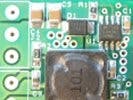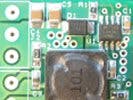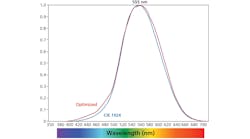The generic Buck converter power stage is shown in Figure 1(a). When switch SW1 turns on, the voltage on node Vs is equal to the input voltage. When SW1 turns off, the inductive current flowing in L1 forces D1 to conduct and clamps the voltage on node Vs to be very close to zero. The resulting Vs node voltage waveform is a high frequency square wave as shown in Figure 1(b).
Inductor L1 and capacitor C2 form a low pass filter to recapture the DC (or average) value of the switching waveform. Whenever SW1 conducts current, it has zero voltage across it and when it blocks current, it has high voltage across it. This results in a highly efficient power-conversion process.
+++++++
This article was published in the September/October 2007 issue of LEDs Magazine.
To read the full version of this article, please visit our Magazine page, where you can download FREE electronic PDF versions of all issues of LEDs Magazine.
You can also request a print copy of LEDs Magazine (available by paid subscription) and sign up for our free weekly email newsletter.






